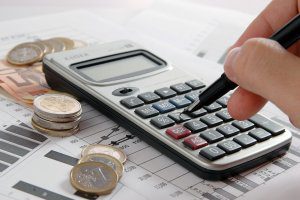KYIV. April 14 (Interfax-Ukraine) – The situation on the outward reinsurance market in Ukraine has improved over the past 10 years, with the market becoming more conventional and in 2014 the geographic structure of the reinsurance portfolio was balanced thanks to the reduction of Russia’s share of the market from 40% to 18% with almost no administrative measures being taken, member of the national commission for financial service markets regulation Oleksandr Zaletov said at a first meeting of the investment committee organized by Insurance TOР magazine.
He said that the history of Ukrainian insurance went hand in hand with the reinsurance market in Russia.
Zaletov said that there are three categories of reinsurers who reinsured Ukrainian risks in Russia: subsidiary Russian representatives of global insurers (SCOR, Munich Re), traditional Russian reinsurers (Ingosstrakh, Unity Re, etc), and insurers representing the Russian political elite.
Ukrainian insurers have had time to think and redistribute their flows of outward reinsurance and define new strategic partners, Zaletov said.
“Now the outward reinsurance portfolio is more diversified than it was earlier. The regulator believes that it could revoke rating grants to reinsurance and pegging to the country rating. Today we should return to the international reinsurers rating scale,” he said, adding that the requirements to cover reserves by reinsurers should be toughened to 25%.
According to information presented by the commission at the meeting, 22.9% of Ukrainian risk is reinsured in UK, 21.4% – in Germany, 13.7% in Switzerland, 6.4% in Austria, 3.6% in France, 2% in the United States, 1.7% in the Czech Republic, 1.5% in Poland, 1.1% in Ireland and 1% in Italy.
Zaletov said that the regulator knows reinsurers on the Ukrainian market who receive from UAH 500 million to UAH 1 billion of reinsurance payments and pay nothing on the risks,.
“The regulator plans to toughen checks of these “rural club insurers” registered in the burned down House of Trade Unions in Kyiv. The regulator has several problems with the organization of the checks, as there are no formal signs to initiate the checks under Ukrainian law,” he added.

KYIV. April 14 (Interfax-Ukraine) – Glas Trösch Group (Switzerland), one of the largest European flat glass producers, still plans to build a float glass plant worth $250 million with a projected capacity of 700 tonnes a day in Dnipropetrovsk region.
Commercial Director at Glas Trosch in Ukraine and Moldova Serhiy Sorokun announced this at a conference devoted to modern facade systems and translucent structures, their energy efficiency, durability and safety, which was held in Kyiv on April 9.
“We have plans, but the next step is by our Swiss investors-owners of business. Documents are ready, and studies have been conducted,” he told reporters.
Sorokun said that from an industrial point of view the only question on the possible realization of the project is the supply of soda required for float glass production.
Previously, Crimea Soda Plant (part of Group DF of Ukrainian businessman Dmytro Firtash) was considered as the key supplier, he said.
At present, the key risks for the realization of the project is the political situation in Ukraine and the cost of natural gas consumed by the project, Sorokun said.
He said that the calculated gas consumption by the plant is around 120,000 cubic meters a day.
Glas Trösch entered the Ukrainian market in 2008 via the acquisition of Linewood enterprise in Artemivsk. In 2010, Glas Trösch bought nine companies of the Euroglass Group, one of the largest glass unit producers in Ukraine.
The main part of the glass units used in production by Glas Trosch Ukraine is supplied by Glas Trösch plants in France, Germany and Poland.
Glas Trosch Ukraine has nine companies, including eight in Ukraine and Crimea (Simferopol) and one in Moldova (Chisinau). As of early 2015, the total annual capacity of the enterprises was up to 6.5 million square meters.

KYIV. April 10 (Interfax-Ukraine) – The Ukrainian government has submitted to the Verkhovna Rada the draft guidelines of the budget policy for 2016 (the budget resolution), built on the forecast for a GDP growth of 2% with inflation (December to December) being 9%, and the average annual hryvnia to U.S. dollar exchange rate of UAH 22.5 per $1.
According to the document, it is aimed at keeping the maximum amount of the national budget deficit within 3% of GDP and retaining a share of GDP redistribution through the consolidated budget at a level not higher than stipulated in the 2015 national budget.
The government noted that the draft document is based on the program of cooperation between Ukraine and the International Monetary Fund.

KYIV. April 10 (Interfax-Ukraine) – The situation in the currency market is beginning to stabilize, the National Bank of Ukraine (NBU) has said on its website.
“Signs of reduction of tension were seen in the Ukrainian currency market in March. The quick regulatory measures made by the NBU and the start of the new four-year program of financial aid as part of the Extended Fund Facility (EFF) with the International Monetary Fund (IMF) promoted it,” reads the report.
The central bank said that on the cash currency market a net supply of foreign currency was observed for the second month in a row: citizens sold foreign currency $129.2 million more than they bought (net supply in February was $126.4 million).
The increase in the refinancing rate to 30% and rates on the active and passive transactions of the NBU helped it to retain the pace of money supply – the monetary base in March grew by 0.1%, the NBU said.
Among the NBU’s top-priorities is to achieve and maintain price stability in the country.

KYIV. April 10 (Interfax-Ukraine) – The gross grain harvest in 2015 may be lower than last year’s harvest and could reach 57.36 million tonnes, Head of the Business Project Service at APK-Inform news agency Rodion Rybchinsky has said.
“The fields sowed with crops will almost remain unchanged… However we predict a fall in the yield for almost all crops,” he said at a press conference in Kyiv.
Rybchinsky added that according to his projections, fields with grain crops will total 14.825 million hectares compared to 14.8 million hectares in 2014. The average yield could fall from 43.7 centners per hectare to 39.7 centners per hectare.
The expert said that thanks to the good hibernation period the wheat harvest could be 23.6 million tonnes. The corn harvest could fall from 28.5 million tonnes to 24.3 million tonnes mainly due to the reduction of fields with corn.
He also said that the number of fields with soybeans will increase by 19%, to 2.15 million hectares, which would boost its harvest to 4.036 million tonnes. The expert said that sunflower harvest in 2015 could amount to 9.574 million tonnes, and rapeseeds harvest could amount to 1.491 million tonnes.

KYIV. April 10 (Interfax-Ukraine) – Consumer confidence in Ukraine improved by 0.7 points, to 41.8 in March 2015, according to a study conducted by GfK Ukraine.
“In March 2015 the fall in consumer confidence of Ukrainians [which] continued for the past fours month [was] suspended. The Consumer Confidence Index (CCI) improved by 0.7 points, to 41.8,” reads the report on the study issued by the company.
The company said that the Index of Propensity to Consume lost 3.3 points, reaching 48.9.
Expectations of changes in unemployment improved: the Index of Expectations of Changes in Unemployment (IECU) rose by 6.1 points, to 163.3.
Inflationary expectations improved: the Index of Inflationary Expectations (IIE) lost 6.7 points, reaching 181. Devaluation expectations improved by 27.4 points, to 133.6.
“In the periods of the reduction of devaluation expectations consumer confidence mainly improved among rich citizens and residents of large cities. Along with measures aimed at reducing the deficit of the Pension Fund, confidence of respondents aged 60 or over worsened by 3 points,” reads the report.
CCI in Ukraine is calculated on the basis of a selective poll of households. During the study, 1,000 people aged from 16 upwards were polled.
GfK Ukraine is a Ukrainian research company. It is part of the GfK Group international market research network.